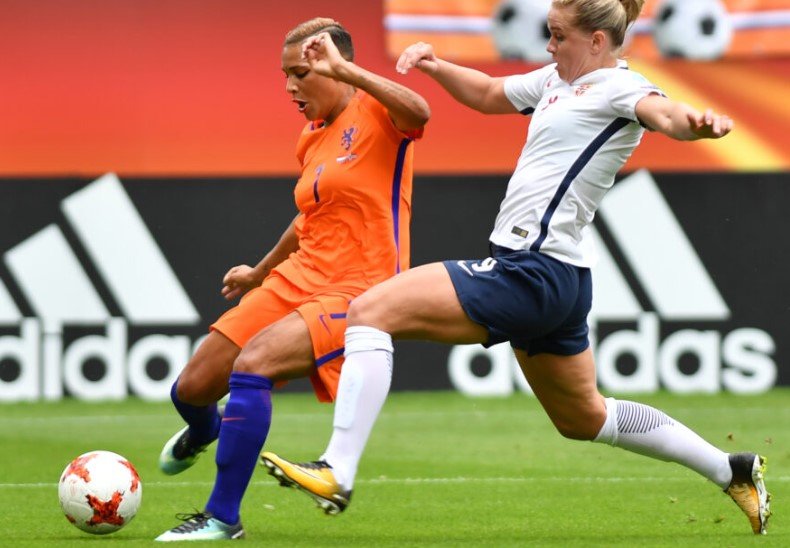As we step into 2025, the world of women’s sports is experiencing a seismic shift. From live events to social media fandoms, the demand for women’s sports content is at an all-time high, creating new opportunities for brands to get in on the action. So how can companies ride this wave of excitement, ensuring their presence isn’t just seen but felt in a way that resonates deeply with consumers? As global events like the UEFA Women’s Euro tournament loom, there’s never been a better time to answer that question.
A Changing Landscape: From Underdog to Headliner
It wasn’t long ago that women’s sports were largely sidelined in mainstream media, with coverage often treated as an afterthought. But today, this dynamic has shifted. Women’s sports are finally claiming the recognition they deserve, and with that, a rapidly growing audience is emerging. Whether it’s through watching live games, engaging with content, or purchasing merchandise, the appetite for women’s sports is skyrocketing.
For brands, this presents an exciting yet challenging opportunity. The question isn’t just about joining in, but about doing so in a way that feels authentic, aligned with the passions of the fans, and true to the sports themselves. Gone are the days of underestimating the market. The interest is there, and it’s booming.
Building the Next Generation of Fandom
It’s no secret that brands love tapping into fandoms. After all, these are the loyal fans who live and breathe the sport, often spending considerable time and money supporting their teams. But the key to truly owning a space in women’s sports is understanding the unique dynamics of this emerging fandom.

For starters, women’s sports fans are more than just spectators—they’re a movement. These fans are advocating for equality, for better representation, and for visibility. Brands looking to engage in this space must approach it with a sense of responsibility. This isn’t about capitalizing on the moment for a quick win. It’s about becoming part of something bigger—a cultural shift that’s as much about social change as it is about sports.
Take Ilona Maher, the most-followed rugby player on the planet (yes, of any gender!). She embodies the new face of women’s sports fandom: unapologetic, bold, and fierce. Maher’s fan base is built on more than just her skill on the field—her brand is about inspiring others, breaking barriers, and creating lasting change. When brands partner with athletes like Maher, it’s not just about the product; it’s about aligning with a larger mission.
Creating Legacy Through Experiential Activations
So how can brands truly step into this space? According to experts from sports marketing agencies like Matta, See You at Jeanie’s, and Footballco, it all starts with experiential activations that capture the spirit of the sport. Whether it’s setting up fan zones, offering behind-the-scenes access, or hosting live watch parties, the key is creating memorable experiences that go beyond the traditional sponsorship model.
The upcoming UEFA Women’s Euro tournament, for instance, offers a prime opportunity for brands to connect with an enthusiastic audience in a way that feels organic and impactful. Experiential marketing isn’t just about handing out branded swag—it’s about creating spaces where fans can interact, share their love of the game, and celebrate the athletes they admire.
More Than a Marketing Strategy: Authentic Storytelling Matters
At the heart of successful brand campaigns in women’s sports is storytelling. But we’re not talking about just any kind of story. These stories need to be authentic, centered around the athletes and their journeys. Whether it’s a brand highlighting the personal sacrifices of an athlete or the struggles women face to break into a male-dominated space, authenticity is crucial.
Brands that tell these stories well will foster a deeper connection with their audience. Think about how Nike has evolved in recent years, shifting focus to highlight female athletes in their campaigns. Instead of just selling shoes, they’re selling empowerment and the spirit of overcoming obstacles.
With women’s sports now taking center stage, this is the perfect time for brands to get involved—provided they do so with respect and understanding.
Helping Gen X+ Reclaim Their Stolen Sporting Years
Here’s a unique angle many brands may not have considered: women’s sports are helping Gen X and older generations reclaim their “stolen” sporting years. These are the women who grew up in a world where their athleticism wasn’t celebrated or supported.
For many, it’s not just about watching sports—they’re finally seeing themselves represented, not as underdogs but as champions. This shift is incredibly empowering, and it offers an untapped market for brands to engage with. Campaigns that speak directly to this demographic can foster loyalty and ignite a newfound sense of purpose.
Women’s Sports: A Marketplace on the Rise
When it comes to numbers, the market for women’s sports is growing at a rapid pace. As the European Women’s Football Championship kicks off this summer, brands will find themselves in a prime position to cash in on a sector that’s gaining traction globally. The financials speak for themselves—sponsorship deals are getting bigger, and merchandise sales are soaring.
The real opportunity, however, lies in understanding how this marketplace intersects with other industries like fashion, fitness, and even tech. Women’s sports aren’t confined to the field; they’re influencing fashion trends, inspiring fitness routines, and pushing boundaries in all kinds of sectors. Brands need to tap into this cross-industry connection for maximum impact.
The Road Ahead for Brands
The question now is: Will brands continue to ride the wave, or will they let it pass them by? Women’s sports are no longer a niche market. They’re a global powerhouse, and any brand that fails to recognize this will miss out. The demand is there, the audience is waiting, and the moment is now. Brands that take the right approach will not only benefit from increased exposure but will also cement their place in a rapidly growing and historically significant movement.








